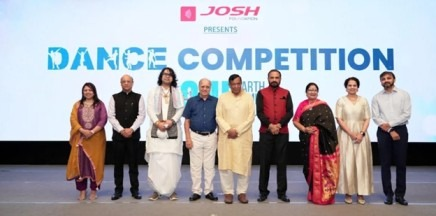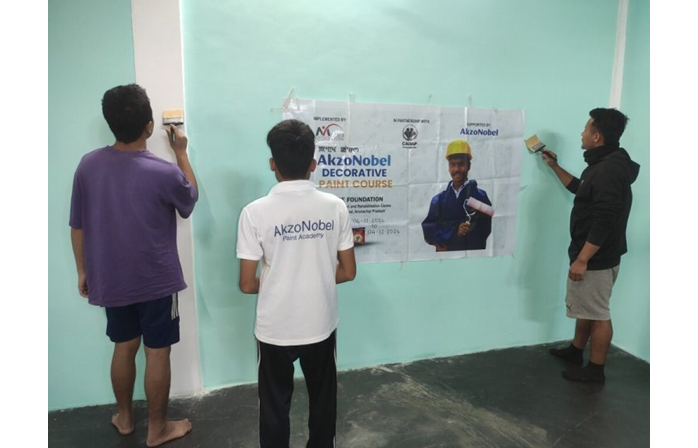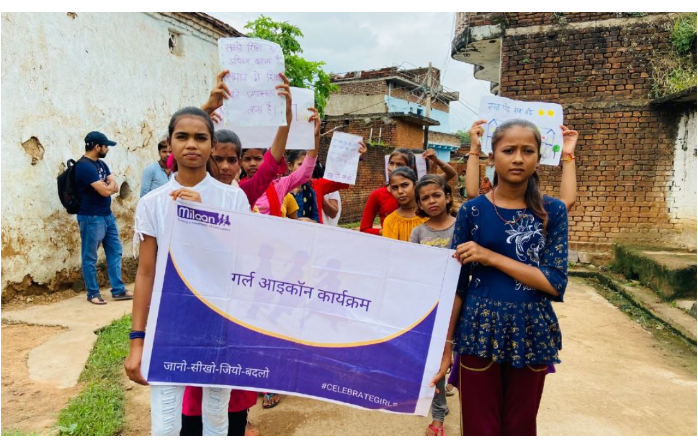More art than strategy?
By- Sarah Berry
January 27, 2020

Sarah
Professional and personal lives demand interaction with fellow humans, which underlines the need for interpersonal and intrapersonal relations, the vortex of which revolves around conflict management. We do not need to define the word ‘conflict’, as we have experienced it at some point in life, and perceive its cause, approach, and solution in different ways.
A conflict arises, essentially, due to differences—be it in any domain—and seeks dialogue as the main tool for effective resolution; dialogue that rests on the following fulcra: listening, understanding, and negotiations. As Arindam Upmanyu, a student of public policy, says, while recalling his professional journey: “Conflicts are often inevitable—regardless of the work ethic or the work culture of the organisation. However, I feel that the simplest way to resolve the most complex conflicts is through dialogue— clear and effective communication is the key.
Whenever I find myself in a situation that is leading to a conflict, I try to ‘break down walls’ over a cup of coffee. A good conversation not only brings out misunderstandings into the open, but helps realise that the core of the conflict may have just been a mirage of a problem that didn’t even exist!”
Adds Manu Sakunia, who brings with him rich experience in career counselling: “Besides a communication channel that follows the 7Cs of communication, expressing oneself is vital—my strong and weak points; my responsibilities, approach, and expectations; the challenges I face and how I could need support are some of the points that will help peers understand you better, avoiding conflicts to some extent. However, nothing substitutes the power of listening to the other’s view point, in addition to communicating your stand in the matter. Placing oneself in the other’s shoes, trying to understand the obstacles the other faces, finding joint solutions to tackle the issue in the form of negotiations, patience, and respect are crucial for resolving any conflict.”
Public policy expert Vineeta Hariharan shares her mantra on conflict management: “Conflict, like change, is constant; it is bound to occur when more than one thinking mind meet in a level playing field. Conflicts can range across canvases viz home, office, political arena, businesses, governments, and, on the extreme, to the battlefield, the scale and magnitude varying based on the nature of the canvas. Hence, conflict management is a tool that is essential for all stakeholders for maintaining harmony and peace across all levels. Negotiation is an integral part of conflict management as the entire world works on the principle of quid pro quo, where negotiations and compromises have to be done at every stage to gain a win-win for all. For example, in a programme on slum redevelopment that I had formulated and implemented across 50 cities in India, there were deep-seated conflicts. These had to be resolved through well-planned conflict management strategies through multi-stakeholder consultations, carefully designed negotiations with win-win solutions to whatever extent possible—giving tenure rights to slum dwellers co-opted the politicians, providing workable PPP options won the developers, engaging professionals supported the government, etc.
These were strategies that gained success in the long run, after concerted negotiations and conflict management.” From my years of professional experience, another tool is attitude, represented largely through non-verbal and verbal communication:
body language, facial expressions, gestures, tone, and so much more. Applying these effectively in conflict management also serve as apt solutions.
Like almost everything in life, conflicts come with pros and cons. If unresolved, they can result in repercussions that spiral out of control, whilst their effective resolution can serve as catalysts for food for thought and out-of-the-box solutions.
Himanshu Burad, a scholar at Indian School of Public Policy, elaborates: “Though conflicts may appear painful in the short term, they serve as excellent opportunities to introspect, retrospect, and learn about others too—elements that contribute to the holistic development of the self. I remember one such incident pertaining to an important issue had come to a standstill, thanks to the obstinacy of either side. I offered to hold negotiations in a setup away from the current, usual one, which served as a change in ambience, energies, and scenario.
The conversation was kept ‘light’, with the initiation into the source of the conflict being gradual and systematic, keeping the ‘mood’ and responses in mind. It helped me bring both parties to a middle ground. The key principle with which I work in the situation of conflict resolution is that nobody needs to win or lose in the end.”
Having said the above, it is also essential to understand the nuances of conflict management. Suriya Ansari, an engineer by profession, has more than six years of work experience in the NGO, Barefoot College. Her experiences have helped her gauge conflicts and understand negotiations, to a large extent.
She is of the opinion that constructive conflict enables an individual to think on his or her own feet, accommodate different perspectives, look at blind spots in hindsight, and push himself or herself to step out of the ‘comfort zone’.
She adds, “Though there are different types of conflicts, the one I am always at guard from are passive-aggressive conflicts. In a professional scenario, an individual exhibiting this form of a conflict will support the team’s every decision, but will contradict it subtly, yet strongly, when it comes to getting work done at his/ her level. Then there are those who avoid conflicts, completely leading to unresolved issues piling up. Team managers should support the acknowledgment of conflicts—that’s the first step. For this, it may also be required for employees to be trained in identifying constructive v/s toxic work culture. Timely addressal is next. In the end, it is important to build a culture of incentivising teams who have managed conflicts and, hence, improved outputs. These ‘success stories’ can invite insights into future strategies for conflict management.”
Management of conflicts is, actually, management of people, which succeeds management of the self. Introspection of the self is hence paramount. Shehnaaz Janjali, who brings with her more than 25 years of experience in the domain of education, EdTech, and community development initiatives, feels that since conflict resolutions and negotiations are a part of life— both professional and personal—being authentic works for her in all situations, but being authentic has different connotations. For her, it is pretty straightforward: knowing oneself, one’s highest and lowest, the maximum that one will do not to lose, and the non-negotiables that one will never do to win. She then mentions the control of the self-seeking to understand before wanting to be understood and sticking to the threshold decided for oneself by ‘not pushing one’s goalpost’.
So, how do we know that we are fast approaching a conflict? How do we catalyse a conflict management process? How do we negotiate a so-called ‘win-win’? There are so many ‘hows’. But in each question is embedded its answer too. It brings to mind a quote by Vivekananda: “In a conflict between the heart and the brain, follow the heart.” Conflicts, and their solutions, arise essentially from emotions; hence, their solutions arise from a heterogeneous mix of finesse (behavioural, communicational, managerial, and strategical) and intuition. Perhaps, herein one would find the key.
Published here with permission from Indian Management.
Source

Sarah Berry is a consultant offering her expertise in the fields of public diplomacy/advocacy, outreach and training.
© Renalysis Consultants Pvt Ltd










